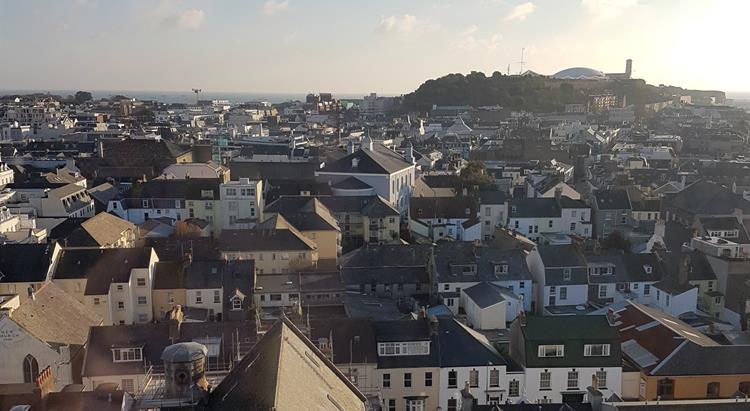21 November 2019

The Government is proposing an ambitious plan to vacate 14 offices and move 1,600 public servants into a new, permanent building. This would release sites for affordable housing and potentially save up to £7 million a year in running costs and £30 million in capital costs over the next 30 years.
The plan, which was approved by the Council of Ministers on 30 October, would see the Government shrink its estate over the next decade from 21 offices today to just seven, including a new central office for both front-line and back-office functions.
Ministers also approved the refurbishment of Morier House, providing better facilities for officials from non-governmental departments and a dedicated space for States Members.
The plans will release sites for affordable, key worker and private housing and commercial development, and halve the Government’s office space, from 36,000 square metres to 18,000, including 11,000 square metres for the new office.
Chief Minister, Senator John Le Fondré, said: "There has been woeful underinvestment in the Government’s office estate over many years and this Government is sorting out that legacy. Too many of our staff work in a poor-quality environment in old offices, with poor wellbeing facilities, poor energy efficiency and limited disability access. In short, they are no longer fit for purpose.
"Consolidating our office estate will release sites for much-needed affordable housing and other development and could save up to £7 million a year of taxpayers’ money, while providing a modern working environment for our staff.
"This is another example of how this Government proposes to invest for long-term benefits, modernising, improving and delivering better value for money."
Project team
A project team has been working on the plans since the start of the year and has considered the costs and benefits of a range of scenarios – from ‘doing nothing’ but maintain the existing estate, through to an entirely new build by a third-party developer.
Using a detailed ’five-case model’ developed by the UK’s Treasury, the team identified that the capital cost of the ‘do nothing’ option could be more than £160 million over the next 30 years, while the option of using a developer to build a new office, on either a Government-owned or third-party site, would potentially save £30 million of those capital costs over the same period.
They also found that a smaller office estate could save up to £7 million a year in running costs, and that around £28.5 million could potentially be raised from the sale of vacated sites (including selling some sites at a discount for social housing development).
In the coming years, the Government proposes to vacate the following offices, and consider alternative uses (including for housing or potential disposal):
- Cyril Le Marquand House
- South Hill
- Philip Le Feuvre House
- Huguenot House
- Maritime House
- Jubilee Wharf
- Maison Le Pape
- Le Bas
- Highlands administrative offices (not Highlands College)
It also proposes to exit the lease from the following properties over the next four or five years:
- Broad Street
- The Parade
- Durell House
- Eagle House
- Liberté House
- Bermuda House
The project has strict governance, reporting through a Project Board, to the One Government Political Oversight Group and ultimately the Council of Ministers, and is applying lessons from reports into previous capital projects by the Comptroller and Auditor General.
The Council of Ministers has approved funding to procure a developer to take the project forward.